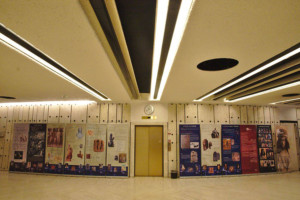The mainstream narrative, in the media and the political sphere alike, usually disregards the fact that, whilst one woman can liberate herself by taking off the headscarf, another one can do the same thing by choosing to wear it. The key issue is not to do away with the headscarf, but to uphold women’s personal freedom of choice.
The polemic around the Islamic headscarf has gained momentum in 2017, particularly, but not only, in Western countries. Over the past months, numerous countries have adopted legislation restricting the right to wear the headscarf. In September 2017, Austria adopted a law prohibiting facial coverings, including niqabs and burqas, in public. Previously, in March 2017, the European Court of Justice had ruled that employers could ban staff from wearing headscarves, in its first decision ever on this issue. In September 2017, Switzerland also moved closer to voting on a nationwide burqa ban, as a popular initiative succeeded in gathering the required 100,000 signatures to move towards a public vote. Quebec’s government voted, in October 2017, a law barring public workers from covering their faces and obliging citizens to unveil when receiving services from government departments, municipalities, school boards, public health services and transit authorities. The law was slammed as discriminatingly targeting the Muslim community and potentially causing the exclusion of Muslim women from everyday life activities. The ban itself was just a pretext to make prevailing forms of xenophobia appear politically correct. Indeed, apart from wealthy tourists from the Gulf, who are a boost to the tourist industry, the number of resident Muslim women donning the burqa or the niqab in Europe is so insignificant that it hardly warrants the adoption of a transatlantic barrier of legislation.
The negative attention given to Muslim women wearing headscarf contributes to the creation of a fertile ground for discriminatory practices and violence. It spreads wrongful depictions of Muslim women, and instils a fear of the Other. It expresses or causes divisions in society about diversity – which is in reality a cause for celebration. The effects of the propagation of racist biases are visible across Europe: according to a study led by the European Network Against Racism (ENAR), in France, 79% of respondents stated that the headscarf was a problem for “vivre-ensemble” (“shared living”), and in Sweden, 64.4% of the Swedish population believed Muslim women were oppressed.
Muslim women are one of the main victims of intersecting forms of discrimination, and often the trigger is their choice to wear the headscarf. Most acts of Islamophobia today target women – predominantly women wearing a hijab or, on very rare occasions where that happens, a burqa. These women find themselves doubly discriminated in various aspects of everyday life. They endure, on the one hand, an important psychological impact, feeling excluded and alienated from society, and on the other hand an economic impact, as structural discrimination often leads to unemployment and financial precariousness.
The headscarf is thus becoming a pretext for discrimination, division and exclusion. However, historically speaking, it represents commonality rather than discord. The Virgin Mary in all churches of Christendom is represented wearing a hijab. As such, the issue should connect cultures, rather than divide different social components. Indeed, the headscarf has played an important role in defining identities in all three Abrahamic religions, namely Christianity, Judaism and Islam.
The headscarf is worn today for various reasons and motivations, pertaining to the personal, cultural, or religious sphere. Labelling Muslim women who wear it as submissive and helpless is therefore a sign of prejudice. These stereotypes are often disguised in the supposedly altruistic desire to save and unshackle these women from submission, or invoke a flawed interpretation of secularity that conflicts with article 18 of the Universal Declaration of Human Rights as regards freedom to manifest in public one’s religious practice or observance. This attitude that transforms secularity into secularism, an exclusive ideology, only reinforces stereotypes, and further dictates to women what to do or to wear.
The politicization of the Islamic headscarf can be considered as part of the larger, worrying phenomenon of Islamophobia that has been gaining ground in non-Muslim societies. In order to combat Islamophobia and to deconstruct the false beliefs associated with the headscarf, the Geneva Centre for Human Rights Advancement and Global Dialogue will organize a sideevent to the 37th Session of the Human Rights Council, entitled “Veiling/Unveiling: The Headscarf in Christianity, Islam and Judaism”. The event, organized in collaboration with the Permanent Mission of the People’s Democratic Republic of Algeria to the United Nations Office at Geneva and other international organizations in Switzerland, will consist of an exhibition and a panel discussion.
The exhibition traces the history of the headscarf in Christianity, Islam and Judaism, depicting it as a connecting thread and an element of convergence. The discussion marking its inauguration will take place on 23 February 2018, at the Palais des Nations in Geneva, and will welcome remarks from the organizing parties, as well as statements from three special guests: Ms. Elisabeth Reichen-Amsler, (director of the section “Church and society” of the Evangelical Reformed Church of the Neuchâtel Canton), Dr. Malika Hamidi (expert and author of numerous publications on Islam and gender issues) and Dr. Valérie Rhein, (PhD in Judaism at the Institute of Jewish Studies at the University of Bern).
This event will hopefully represent a first step in breaking down barriers built on prejudice, and will provide the audience with an objective, truthful representation of the headscarf.
For further information on the exhibition and panel discussion, visit our website at https://www.gchragd.org/ or contact us at info@gchragd.org.
